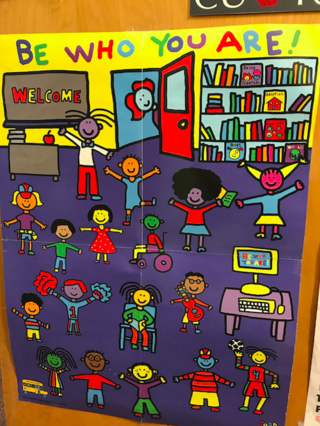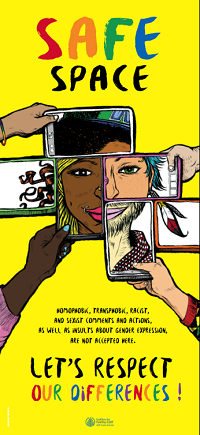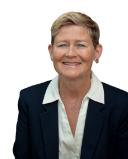Gender
Building Classroom Community
Five ways to set up a gender inclusive classroom.
Posted August 8, 2017

It is back to school time and I just completed our Student Teaching kickoff event which got me thinking about classroom community and climate. Talking with beginning teachers about ways to communicate inclusiveness and respect for diversity got me thinking about the ways I have learned to set this up in my classes with a specific attention to gender diversity. The ideas here were started during my time as a high school teacher and have continued to evolve while teaching at the university level. I do believe all of these can be applied in some form at any age-level.
1) Inclusive welcome
I learned this wonderful strategy from a colleague from Saskatchewan at a conference years ago and have been refining it ever since. She told me about how she would start a new year/term with every class using a very intentional and thought out welcome address. I started using it in the first five minutes of any new class I taught and it is one of the things my students remember distinctly and ask to borrow most often. I start off by saying:
“Because who we are matters and our identities and experiences impact how we learn and engage or disengage from learning environments, I want to start with a very clear and explicit effort to acknowledge and welcome your full selves into our classroom.
I would like to welcome:
- People of all races & ethnicities: African Americans, American Indians & Indigenous peoples, Asian Americans, Latinx people, European Americans, Middle Easterners, Pacific Islanders, biracial and multiethnic people, and people from other racialized and minoritized cultural groups. Our race, culture, and identities impact how we see ourselves, how others see us, and how we engage with school and society. You are all welcome in this classroom.
- I would also like to welcome Atheists, Agnostics, Bahai, Buddhists, Catholics, Christians, Jews, Muslim and pagan people, and people of all religious and faith traditions. How we view the world and our place in it deeply shapes us and our world views. Please explore and examine how your own spirituality shapes the ideas you connect with and resist and respect others' perspectives if they are different from your own.
- I also want to welcome men, transgender people, women, genderfluid, genderfree, genderqueer, nonbinary and all other gender identities. Our gender identity and expression impact the way people see us, mentor us, treat us, and the opportunities we get or have to fight for in this world. Your full self is welcome here.
- Next, I’d like to welcome bisexual, fluid, gay, lesbian, queer, straight, and people of all sexual orientations and identities. We all have a sexual orientation and this impacts our relationships with our families, our romantic partners, our friends, and our communities. These matter to who we are, where we feel welcome, and how we learn.You are all welcome here.
- I now want to welcome citizens, immigrants, international students, permanent residents, undocumented students, and folks of all immigration statuses. Your status impacts your interactions with financial aid, law enforcement, and other social institutions. It helps you see different strengths and limitations of our nation and it matters in this classroom. You can share or not share your status with us, but we want you to feel safe and supported to speak about it here.
- Next I would like to welcome people of all abilities: those with a learning disability, physical disability, mental disability and other visible, and invisible disabilities. These impact the resources and challenges we have to draw on as learners. If you require accommodations or have information that can help me make this class more accessible for you, please be sure to let me know.
- Please welcome people of all social classes: poor, working class, middle class, upper class; people who have experienced homelessness or food instability, people who have experienced upward and downward mobility in their lifetimes. These impact our access to educational opportunities, health care, housing, nutrition and how much energy we have available to invest in learning, studying, working, and supporting our families.
- Are there other identities you, the class, would like to explicitly welcome into our learning space? [leave wait time here — sometimes people share, sometimes they don’t].
- Thank you. If at any time during this class you’d like to add or remind us about this welcome, please let me know or feel free to do so yourself.
Who we are matters and I want to invite you to bring all parts of who you are into this learning environment. Your identities and experiences shape how you experience the world and offer us all new ways of seeing and understanding the world. I hope you will share those experiences with us so we can all broaden our horizons and develop deeper and more diverse understandings of the world and trust and respect for each other.”
Some of this language may need to be adapted to your student body, but hopefully this template is a starting point to help you think about how you want to welcome students
2) Introduce yourself intentionally
This is a standard first day thing all teachers & professors do, but the way you do it will impact students differently. You can tell your students you are going to introduce yourself using the name and pronouns you want people to use in interacting with you and then you will ask them to do the same (in small groups or to the whole room).
“My name is Liz — please address me as Liz, Dr. Meyer, or Professor. I am happy with any of the three — use what feels best for you. I use she/her/hers pronouns. When you introduce yourselves, please give us the name you want us to use in this class and the pronouns that feel right for you. Some possibilities include: he/him/his, she/her/hers, they/them/theirs, and ze/hir/hirs. If it changes during the year, please let me know so I can be sure to recognize you the way that feels most affirming to you.”
3) Don’t “call the roll”

I have stopped this practice for many reasons including gender diversity. There are often students who don’t use their legal first names, many students who dread it because their names are chronically mispronounced, and some students whose legal name does not reflect their gender identity. I like to work a warm-up /team-building activity in the first 15 minutes to help me learn student names and promote activity and collaboration early on. One of my favorite “roll call replacement” activities is a standard Line-up challenge where the task is for students to line up alphabetically by last name without talking. If students have been in school together for many years they might need a different challenge (birthday order by month from Jan-Dec or middle names). I like last names because it is easy to then have students go down the line, introduce themselves to the room with preferred name and pronouns, and verify their last names are in order by my class printout. I then make notes on my class roster to make sure I remember to address students how they have introduced themselves. I may sometimes ask a student to repeat or spell their name in order to ensure I pronounce it correctly since using proper pronunciation and spelling is an important way to respect and welcome diverse cultures, languages, and identities into the classroom.
4) Explain bathroom policies/procedures

Let students know where the closest facilities are to use during class and if they need to get permission or a pass before leaving. Make sure students know about options for all-gender or gender-neutral facilities. Try to find a way to make your hall/bathroom passes so they are not gender-specific. If your building has only designated male & female public bathrooms for students, check with your administration about the policy for accessing single-user facilities (nurse's bathroom, staff washrooms, etc.) and share this information with all of your students.
5) Representation matters

Make sure you have people of various races, genders, cultures, abilities, and careers represented in your books, posters, decorations, and curriculum. Does your school/university have a safe space or ally program? Do you have a sticker or poster on your door or a statement on your syllabus that indicates if you support that program? If you do, make sure you stand behind it in actions by interrupting derogatory jokes and name-calling and explaining to your students what it means to you to be an ally.
More ideas for designing spaces inclusive of gender diversity are available here. More ideas for beginning of the year community building ideas are here. Making these intentional and explicit efforts is essential as data show that vulnerable youth, including transgender and undocumented youth, are experiencing higher rates of bullying, harassment, and suicidal thoughts since November 2016. This is being referred to as the “Trump effect”. As educators, it is our job to do everything we can to create affirming and welcoming spaces for students to learn, develop, and explore ideas and identities. This can’t happen if they feel threatened or in harm’s way. I hope these suggestions give you some ideas of how you can start this school year off by creating a welcoming, supportive and affirming learning community for all students.


